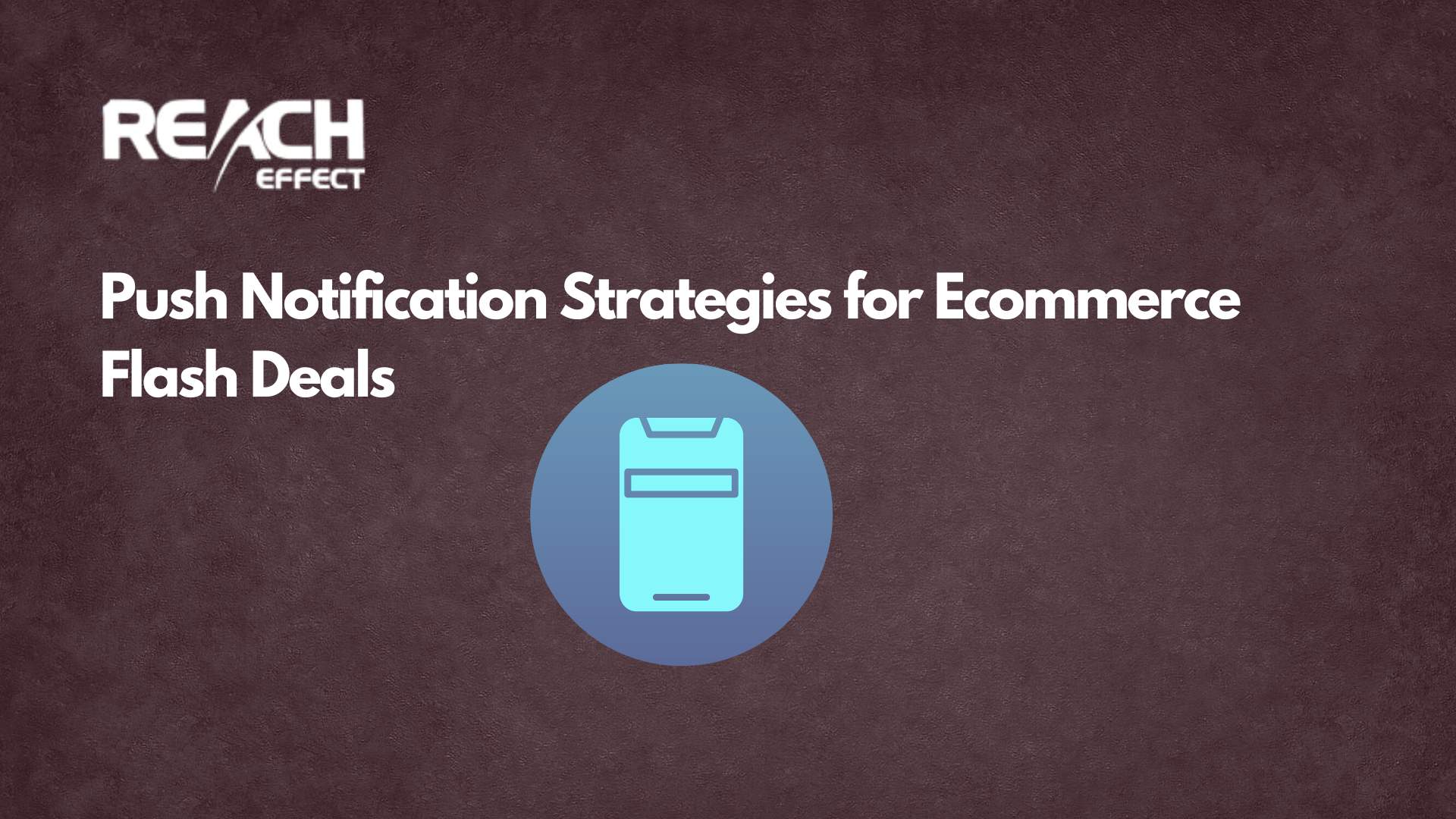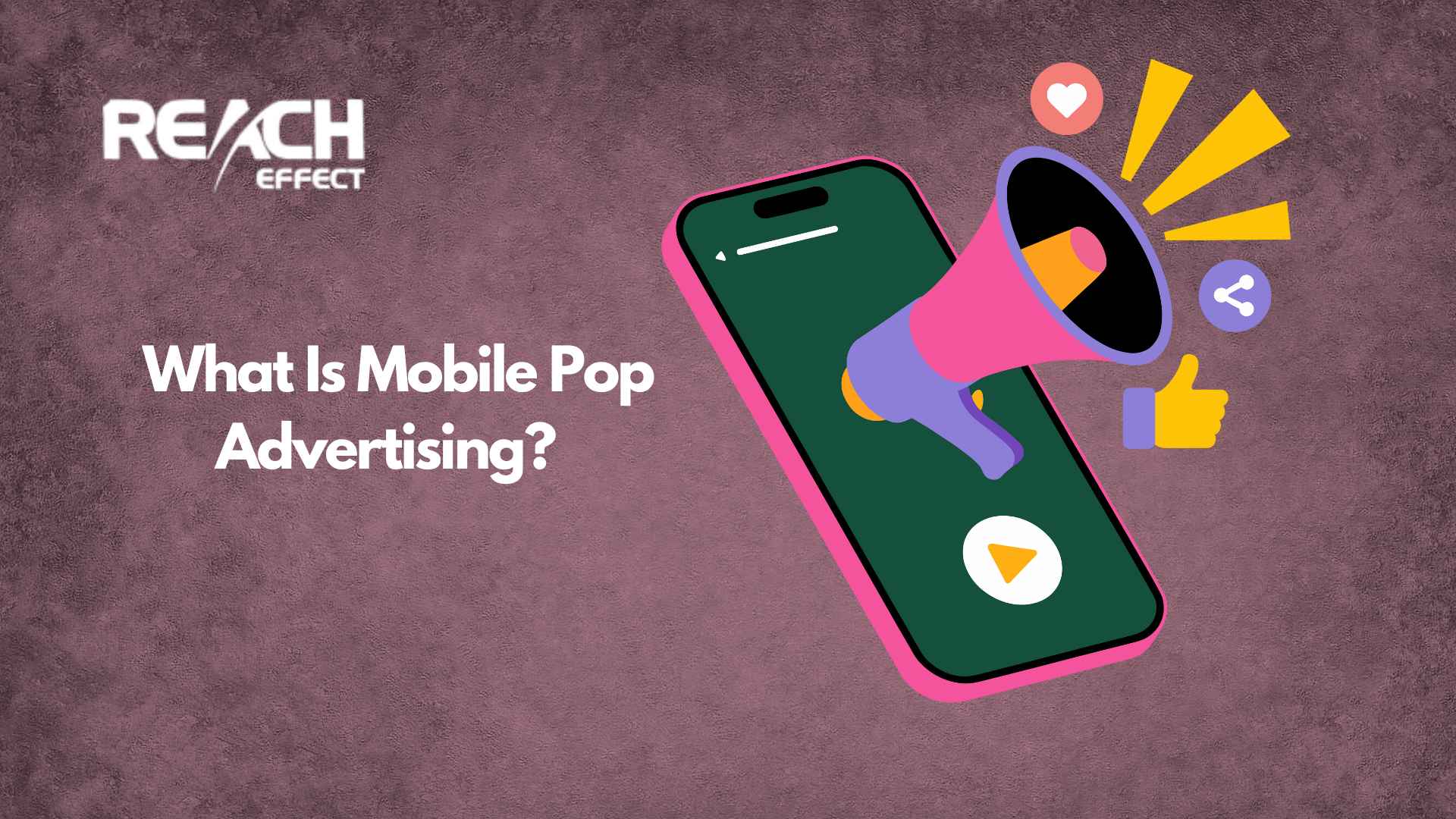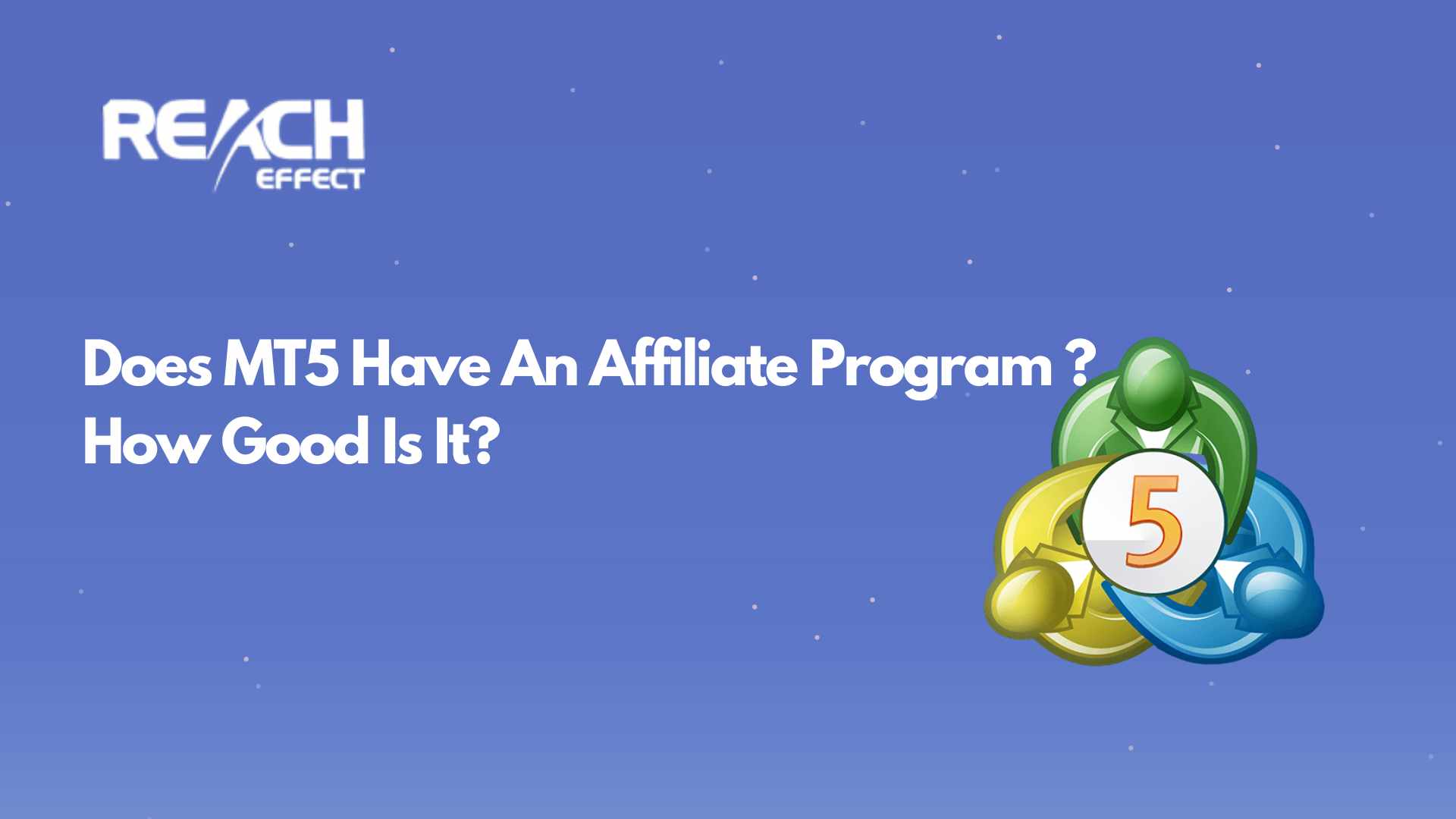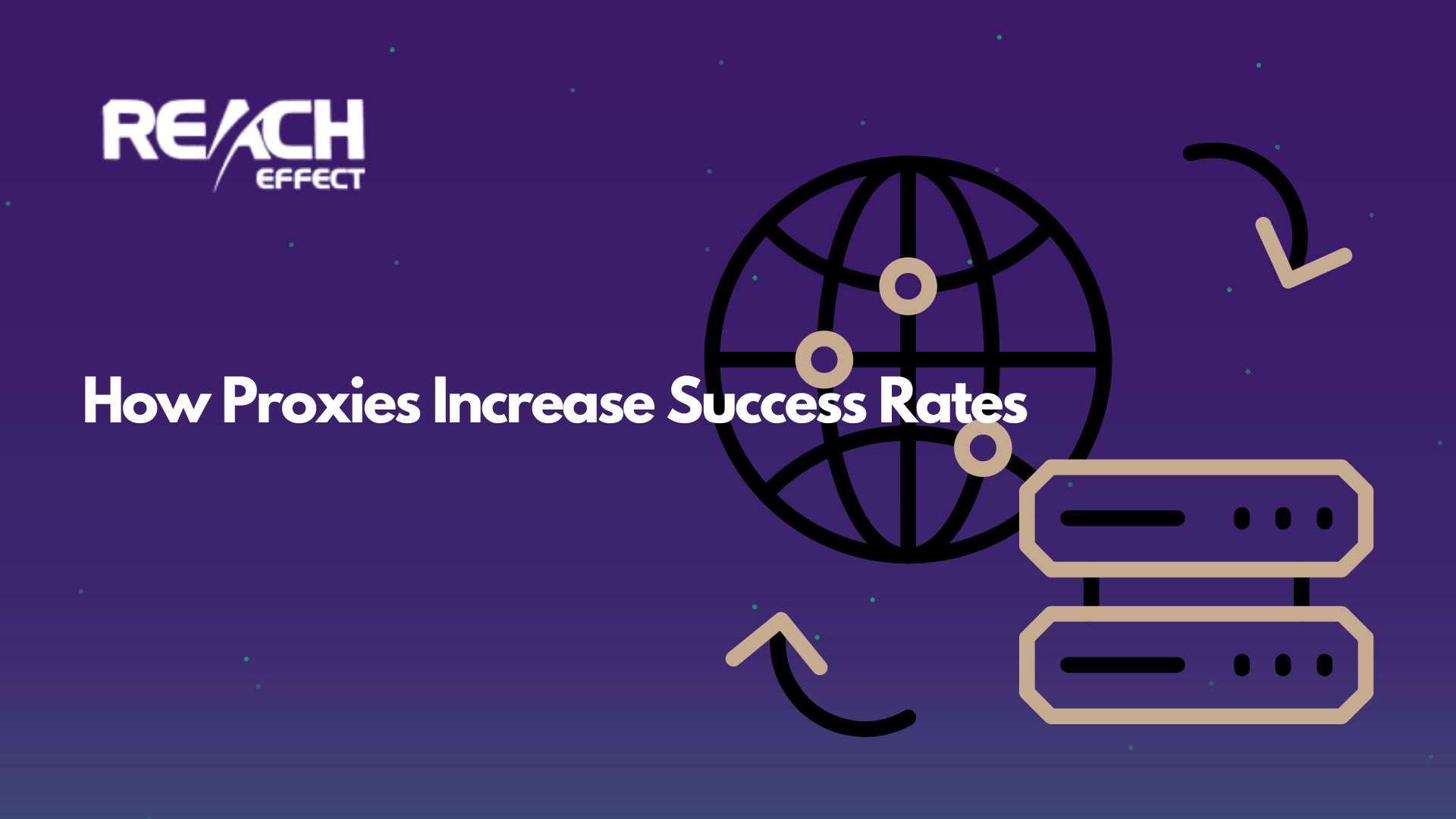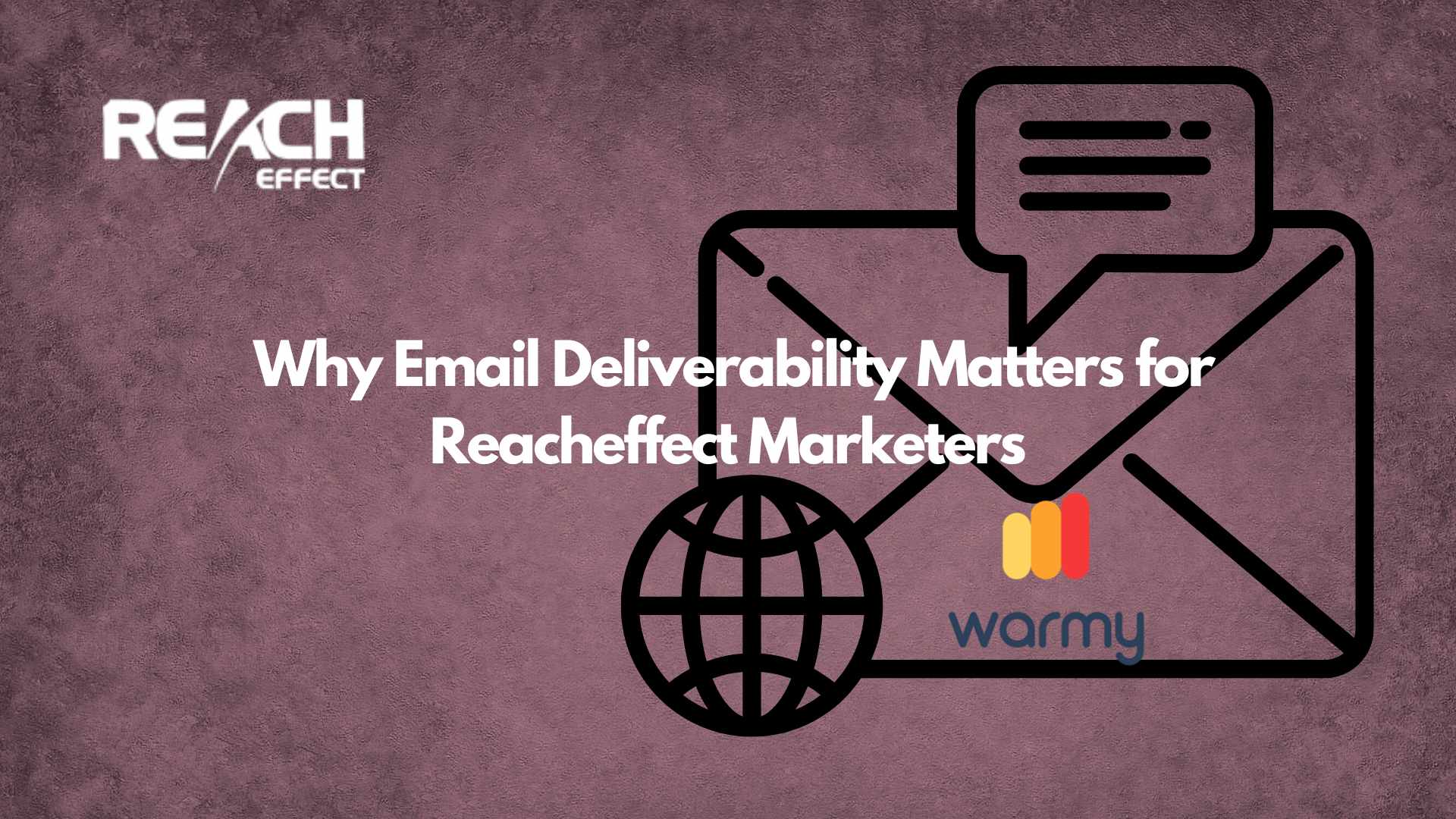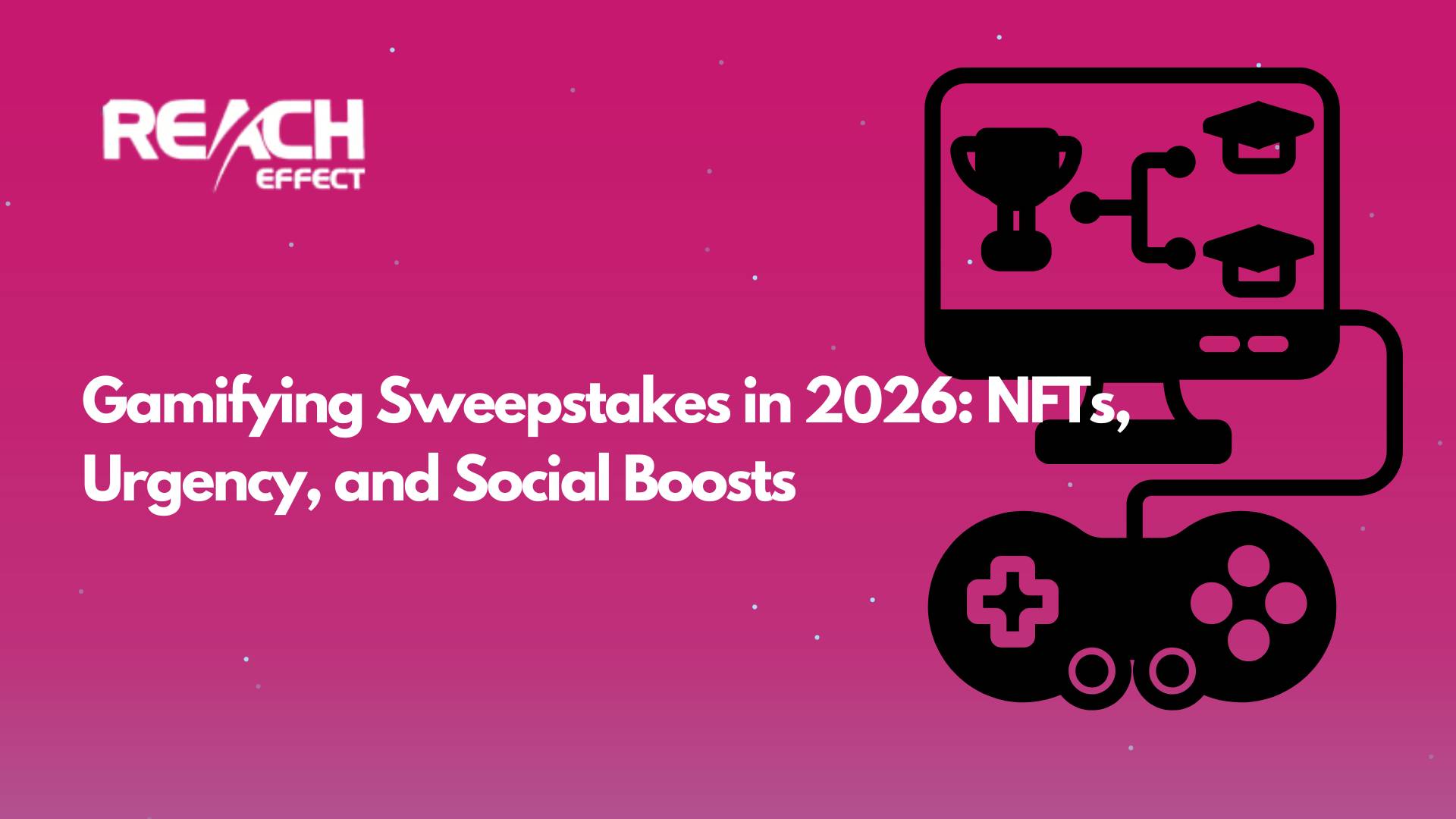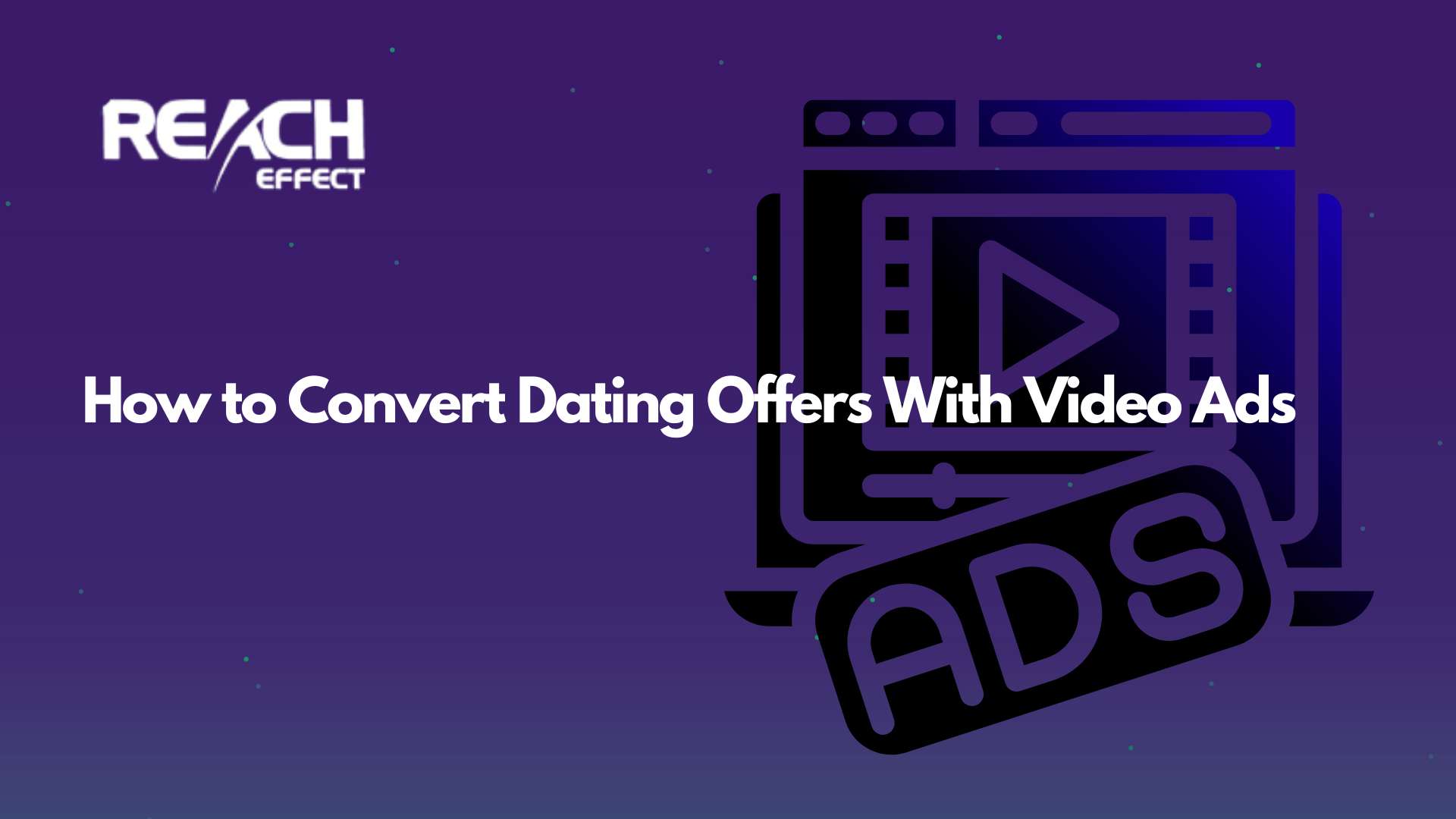Black Friday has evolved dramatically over the years. What used to be a single-day shopping frenzy has turned into a week-long marathon of deals, flash sales, and limited-time offers. I’ve managed campaigns through countless Black Fridays, and I can tell you that the brands winning big are the ones using push notifications strategically.
Thank you for reading this post, don't forget to subscribe!Push notifications have become the secret weapon for ecommerce during Black Friday. While email inboxes overflow and social media feeds get cluttered, push notifications cut through the noise instantly. They appear right on your customer’s device, demanding attention in a way that other channels simply can’t match.
But here’s what most marketers get wrong: they treat Black Friday push notifications like a megaphone, blasting every deal to everyone. That approach doesn’t just fail. It actively damages your relationship with customers and tanks your ROI. I’ve seen it happen too many times.
When Is Black Friday 2025?
Black Friday 2025, the highly anticipated shopping extravaganza that kicks off the holiday season with massive discounts on everything from electronics to apparel, falls on November 28, the day immediately following Thanksgiving in the United States. Retailers like Best Buy, Walmart, and Amazon typically launch early deals weeks in advance, transforming the event into a month-long savings spree, but the official date remains a prime opportunity for savvy shoppers to snag doorbuster bargains both in-store and online.
Why Push Notifications Dominate During Black Friday
The numbers tell a compelling story. Push notifications have average open rates between 50-90%, compared to email’s 20-25%. During Black Friday, when timing is everything and deals expire in hours or even minutes, that immediate visibility becomes critical.
I remember running a flash sale last Black Friday that lasted just three hours. We sent a push notification and saw purchases start coming in within minutes. The same deal promoted through email took over an hour to gain traction, and by then, half the inventory was already gone.
Push notifications work because they meet customers where they are. People check their phones constantly, and a well-timed notification can catch them at the perfect moment. Whether they’re browsing competitors, sitting on the couch, or actively shopping, your message reaches them instantly.
Segmentation Makes or Breaks Your Campaign
This is where most Black Friday push notification strategies fall apart. Sending the same message to your entire subscriber list is like throwing darts blindfolded. You might hit something, but it won’t be pretty.
I segment my audience based on several key factors before Black Friday even starts. Purchase history tells me who’s interested in what product categories. Browsing behavior shows me who’s actively shopping versus who’s just window shopping. Cart abandonment data reveals who’s on the fence and needs a nudge.
High-value customers get early access notifications and exclusive deals. These are people who’ve spent significantly with your brand and deserve VIP treatment. I send them notifications about premium products and limited-quantity items before anyone else sees them.
Recent browsers receive notifications about the specific products they viewed. If someone looked at running shoes three times this week, they’re getting a notification when those shoes go on sale, not a generic “everything is discounted” message.
Cart abandoners need special attention during Black Friday. These people were already interested enough to add items to their cart. A push notification reminding them that their items are now discounted, combined with a sense of urgency about limited stock, converts remarkably well.
Working with platforms like Reacheffect makes this segmentation process much more manageable. The right tools let you create dynamic segments that update automatically based on user behavior, so you’re always targeting with precision.
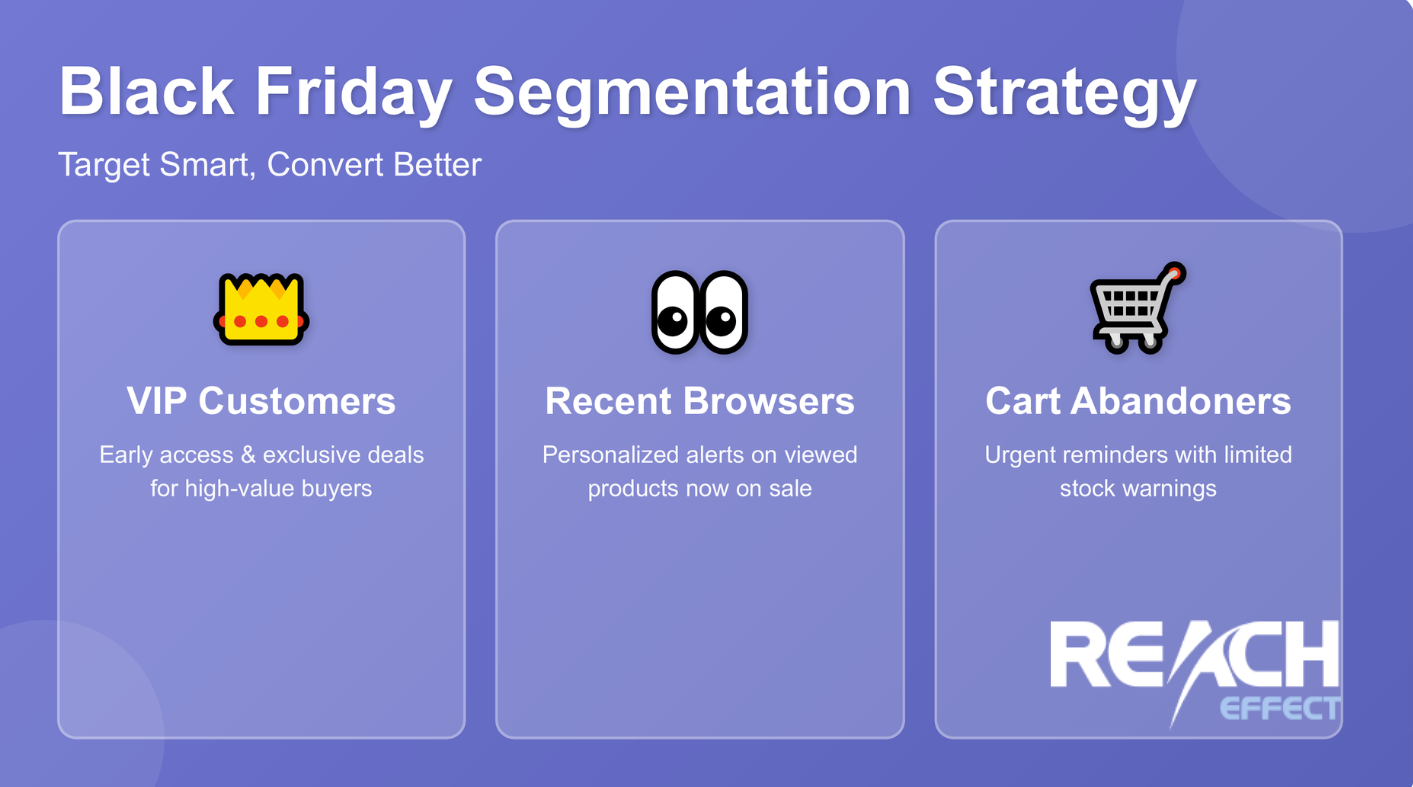
Timing Your Notifications for Maximum Impact
I’ve tested push notification timing extensively during Black Friday periods, and the data is fascinating. The worst thing you can do is send notifications randomly whenever you remember or when it’s convenient for your team.
Early morning notifications (6-8 AM) work well for deals that start at a specific time. People check their phones first thing in the morning, and you want to be there when they’re planning their day. I use these for major doorbuster deals or when inventory is truly limited.
Lunch hour (12-2 PM) catches people during a natural break. They’re looking for distraction, and your notification offers the perfect excuse to browse. I find these work especially well for mid-tier deals that don’t require immediate action but are attractive enough to consider.
Evening notifications (7-9 PM) hit when people are relaxing and actually have time to shop. I save my most compelling deals for these slots because people can act on them immediately without feeling rushed.
Here’s something crucial: space out your notifications. Nothing kills subscriber retention faster than notification spam. I never send more than three push notifications per day during Black Friday, and I make sure each one offers distinct value. Quality over quantity wins every time.
Advertise With The Reacheffect Ad Network
Get TrafficCrafting Messages That Drive Action
The words you choose in your push notification matter enormously. You have maybe 40-50 characters to grab attention and convince someone to click. I’ve written hundreds of these, and certain patterns consistently outperform others.
Numbers work incredibly well. “50% off” performs better than “half off.” “3 hours left” beats “limited time.” Our brains process numbers quickly and they add concrete credibility to your claims.
Urgency drives clicks, but it needs to be authentic. Fake scarcity damages trust. I only use urgency when it’s real. If you have 47 units left of a product, say so. If a deal ends at midnight, mention the specific time. People can smell fake urgency from a mile away.
Personalization increases engagement dramatically. Instead of “Black Friday Sale,” try “Sarah, your wishlist items are 40% off today.” The difference in click-through rates is substantial. Even simple personalization like using the customer’s name or referencing their browsing history makes the message feel relevant rather than generic.
Building Urgency Without Being Annoying
There’s a fine line between creating urgency and being obnoxious. I cross-reference multiple data points before sending urgent notifications to make sure they’re justified and valuable.
Flash deals genuinely require urgent action, so notifications about them should communicate that clearly. I include specific end times and, when relevant, stock levels. A notification saying “Lightning Deal: Premium Headphones $99 (was $299) – Ends 3 PM” gives people all the information they need to make a quick decision.
For longer sales periods, I vary my urgency messaging throughout Black Friday. Early notifications focus on selection and opportunity. Mid-period messages emphasize popularity and social proof. Final notifications lean into last chance messaging. This progression feels natural and keeps people engaged without overwhelming them.
Measuring What Actually Matters
I track multiple metrics for Black Friday push notifications, but not all of them matter equally. Click-through rate is important, but conversion rate is what pays the bills.
Conversion rate by segment tells me which audiences respond best to which types of messages. I’ve discovered that different customer segments respond to completely different messaging strategies. First-time buyers convert better with discount-focused messages, while repeat customers prefer early access and exclusive deals.
Time to purchase after notification reveals how urgent people perceive your offers. If you’re seeing long delays between notification and purchase, your urgency messaging might be off or your deals aren’t compelling enough.
Revenue per notification is my ultimate metric. I calculate this by dividing total revenue attributed to each notification by the number of sends. This helps me understand which types of notifications drive the most value, not just the most clicks.
Using Reacheffect or similar platforms with robust analytics capabilities makes tracking these metrics much simpler. You need real-time data during Black Friday because there’s no time to wait for batch reports to generate.
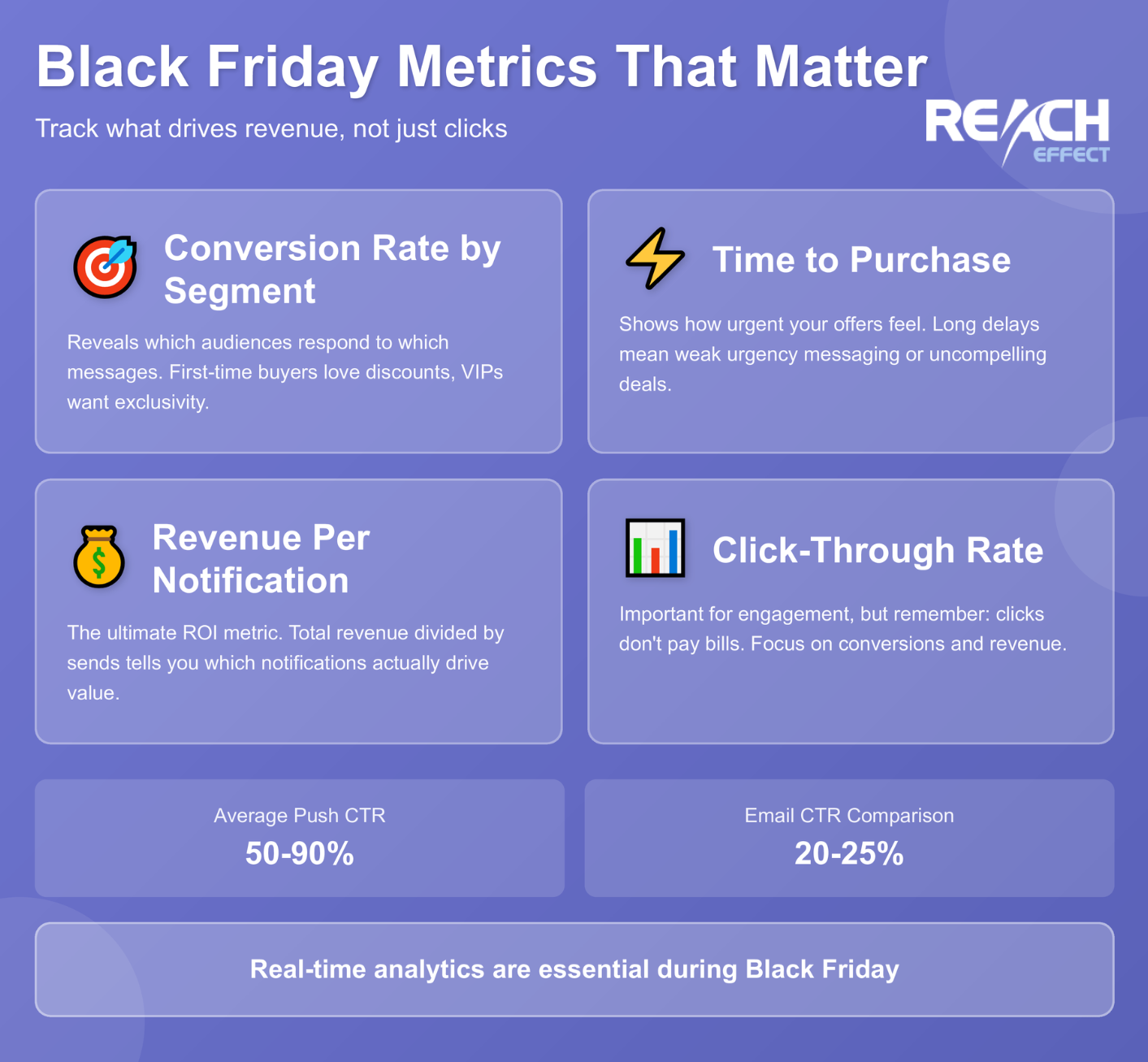
Advanced Strategies That Multiply Results
Once you’ve mastered the basics, several advanced tactics can significantly boost your Black Friday push notification ROI.
Triggered notification sequences respond to specific user actions. If someone clicks a push notification but doesn’t purchase, I have a follow-up notification ready to send a few hours later with additional incentive. This could be free shipping, an extended discount, or a reminder about limited stock.
Geo-targeted notifications work brilliantly for retailers with physical locations. I send different messages to people near stores versus those who shop exclusively online. Store-proximity notifications can drive foot traffic with in-store-only deals, while online-only customers get free shipping offers.
Behavior-based timing sends notifications when individual users are most likely to engage. If someone typically shops in the evening, their notifications arrive then. If another person browses during lunch, that’s when they hear from you. This requires sophisticated platform capabilities, but the ROI improvement is worth it.
Permission and Opt-in Best Practices
None of this matters if people don’t opt in to your push notifications in the first place. I spend considerable effort optimizing the opt-in experience, especially in the weeks leading up to Black Friday.
The timing of your opt-in request is crucial. Never ask for notification permission immediately when someone lands on your site. That’s intrusive and gets declined most of the time. Instead, I wait until someone has shown clear purchase intent. Maybe they’ve added something to their cart, or they’re viewing a product for the second time.
The value proposition needs to be explicit. “Get notifications” is weak. “Get instant alerts for Black Friday flash deals” tells people exactly what they’re signing up for. I also offer an immediate incentive, like early access to Black Friday deals, for people who opt in before the sale starts.
Bringing It All Together
Black Friday push notifications represent one of the highest-ROI channels available to ecommerce brands, but only when executed strategically. The difference between brands that see 10x returns and those that barely break even comes down to treating push notifications as a precision tool rather than a broadcast megaphone.
Segment your audience thoughtfully. Time your notifications strategically. Craft messages that provide genuine value and create authentic urgency. Measure what matters and optimize relentlessly. Respect your customers’ attention and their permission to reach them directly.
Start preparing now. Build your segments, plan your messaging calendar, test your systems, and get ready to execute when Black Friday arrives. The brands that treat this channel strategically consistently outperform those that wing it, and the gap between them grows every year.

